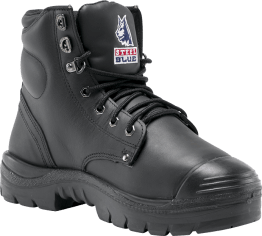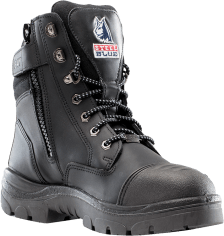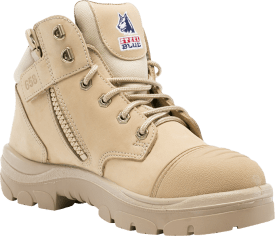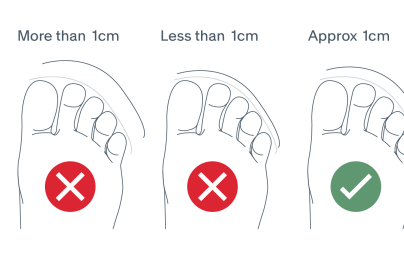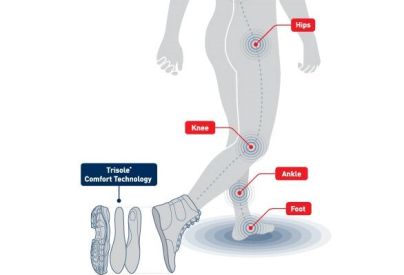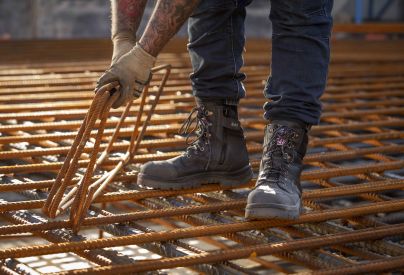BOOT CARE GUIDE: Caring for your Steel Blue boots: Everything you need to know

Like any quality tool, a good pair of work boots is an investment. Look after them properly and you’ll get more out of them.
So, how do you best look after your pair of Steel Blue work boots? In this handy guide we’ll tell you everything you need to know, including how to care for the specific kinds of leather in your favourite pair of Steel Blue boots.
General leather care and maintenance advice
Leather boasts a variety of superior properties that make it ideal for footwear. The durable, yet supple leather helps to reduce the break-in time, making our work boots comfortable from day one.
With a little bit of regular care and maintenance, your work boots will continue to look good, stay comfortable and keep protecting your feet, no matter how dusty or dirty things get on the job.
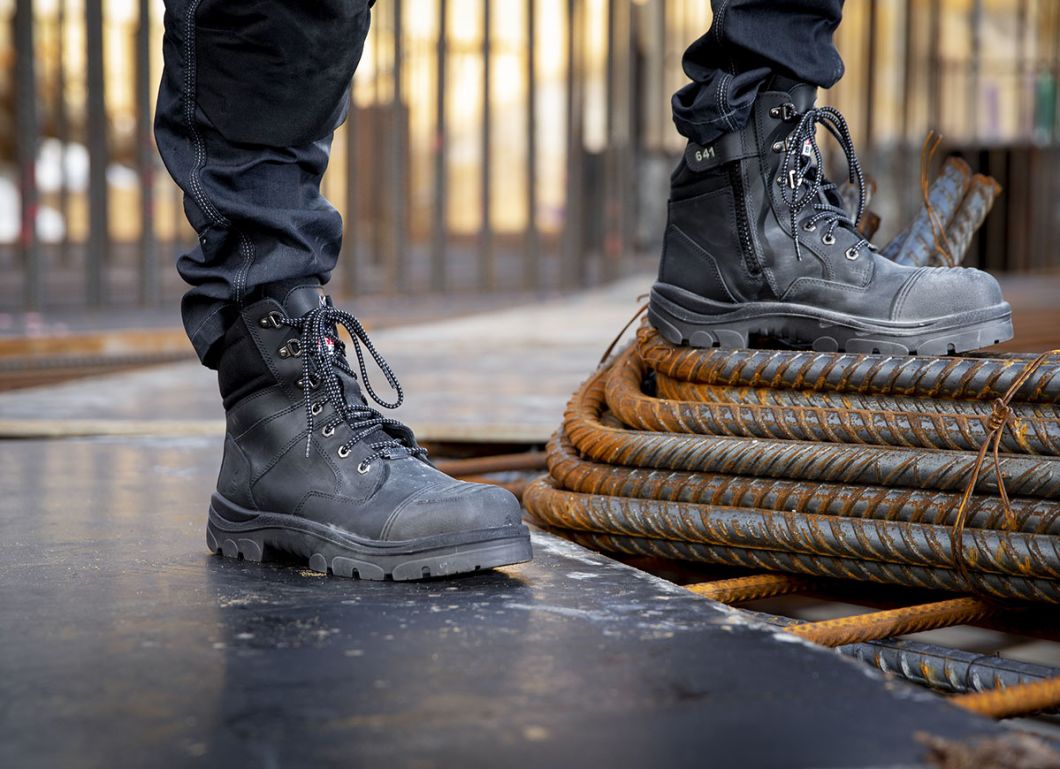
Before wearing your new Steel Blue work boots for the first time:
Apply dubbin to full grain leather, or a waterproofing agent to nubuck leather. This helps to create a protective coating that can help to repel water, chemicals and oil, preventing them from penetrating the leather.
- Dubbin is best for our full-grain leather boots, it’s a product used to soften, condition and waterproof leather
- A waterproofing agent is better suited to suede and nubuck leather boots.
(Not sure which leather your boots are made from? We’ve got some tips below to help you work it out and ensure you’re using the right kinds of protection on your boots.)
Recommended regular maintenance for your boots:
Every day:
- Ensure your feet are washed and thoroughly dried before putting them into your boots. Choose a clean pair of socks each day. This helps to prevent smells and other issues. (While our boots do have a safe, environmentally friendly antibacterial, antifungal and anti-mould treatment called Fresche, good hygiene is always a good idea)
- After each wear, use a soft brush or damp cloth to clean any dirt, mud or contaminates from your boots.
Every couple of weeks:
- Depending on your trade and the environment your boots are in each day, we recommend you reapply your chosen protective agent once a fortnight (or even once a week, depending on your working and environmental conditions).

How to avoid unnecessary damage to your work boots
A lot of avoidable damage to boots can be from the way we put them on, take them off and treat them when we’re not wearing them.
Here are our best tips for avoiding unnecessary wear and tear.
Do NOT:
- Kick your boots off, or take them off, without undoing the laces or zip completely
- ‘Stomp’ into your boots when putting them on. This can lead to your heel crushing the shaft and heel areas of the boots, which can cause the materials in these areas to break down prematurely. Instead, securely hold the collar or boot loop as you slide your foot into the boot
- Use the toe of your boots to kick or lift sharp, heavy or abrasive objects, as this can cause the leather to fail prematurely.
Common work boot maintenance mistakes:
Look after your work boots properly and they’ll last longer. But in your enthusiasm to look after them, avoid these common “shortcuts”, which will do more damage than good.
Do NOT:
- Use solvents to remove mud, dirt, oil and other contaminants from the boot leather
- Over-wet your boots in order to clean them
- Use a heater, hairdryer or other similar device to try to speed up the drying process.
While these might seem like a good idea at the time, they can easily lead to tears!

Tips for drying your work boots
Leather is a natural product that can be affected by water. If your work boots do become excessively wet, it is important to dry them correctly. Here’s what to do:
- Remove excess water with a dry cloth
- Remove the Ortho Rebound® Footbed
- Stuff them with newspaper
- Place them in a warm, well-ventilated position that is away from direct sunlight or radiated heat. Again, it is important to not force dry your boots in front of a heater or under a hairdryer.
Tips for storing your work boots when you’re not wearing them
Where do your work boots live when they’re not on your feet? On the back veranda, in all weathers? Here’s what we recommend instead:
- Store your Steel Blue boots in a cool, dry place away from direct sunlight
- If you’re not wearing them all the time, keep them in tip-top condition by taking them for a walk twice a month. They appreciate being worn
- Don’t store them in dark and humid conditions for long periods, as hydrolysis (decomposition) might occur, causing the soles to deteriorate
Tips for looking after the type of leather in your Steel Blue work boots
All Steel Blue boots are made from premium, high-quality leather that is ethically and environmentally sourced. (Our suppliers are all accredited by the Leather Working Group to ensure just that).
Leather is a natural product and different kinds of leather have different strengths and qualities. During our design process, we carefully select the best type of leather available to ensure each style of boot is fit for purpose.
Your boots will be made using one of these specific kinds of durable leathers. Below, we’ll help you to identify which kind of leather is in your boots, and then give you specific care instructions to help you get the most out of them.

Full-Grain Leather
This is a general purpose, waxy leather.
What it’s in:
- Steel Blue’s full range of men’s and ladies’ black- and claret-coloured boots, with the exception of our chemical boot.
How to care for it:
- Provide additional protection for the premium full-grain leather in your boots by applying Dubbin before you wear them. Reapply it regularly as needed.
Suede and Nubuck Leathers
These leathers have been sanded or buffed to have a softer, velvet-like finish.
What it’s in:
- Steel Blue’s wheat, slate and sand-coloured ranges
- Our Southern Cross Ladies Sand and Pink boots
How to care for it:
- To provide additional protection, treat your new work boots with a leather waterproofing agent (test it on a small section of your boots first, as some waterproof sprays may change the colour and feel of the leather)
- To clean it, brush off loose dirt using a soft bristle brush after each use.

Chemical Resistant Leathers
Steel Blue’s chemical resistant range of work boots use a couple of different types of specially treated leather as secondary protection against accidental exposure and splashes from mild chemicals.
These include Caustic Resistant Leather, which has a special treatment applied to it during the tanning process to provide protection against chemical exposure, and TECTuff® leathers, which are also treated during the tanning process to be able to repel contaminants and provide extra chemical resistance.
What it’s in:
- Caustic resistant leather is used in our Heeler high-leg boot
- TECTuff® is used in our Warragul safety boots.
How to care for it:
- Do not leave chemical residue on leather for prolonged periods
- Clean chemical residue from leather as soon as possible, or at least at the end of every shift, by rinsing with clean water
- Take care not to abrade the surface when cleaning
- Pat with a dry cloth to remove excess water
- Allow to dry naturally — do not force dry.
How to look after work boots with special features like zips or outsoles?
Some of our work boots contain special features to aid comfort or safety. We provide all the information you need below to look after your boots with these features.
Bump Caps and Scuff Caps
Steel Blue has a range of boots that include an abrasion resistant Scuff Cap or Bump Cap. These provide extra protection to the leather in the toe area of the boot.
What it’s in:
- You’ll find Bump Caps on some of our Argyle, Collie and Whyalla boots
- Scuff Caps feature on some of our Southern Cross and Parkes boots
How to care for it:
- Avoid prolonged contact with chemicals or excessive abrasion
- Avoid excessive contact with heat.

Zips
A large range of our safety boots are Zip Sided, containing an industrial-grade zip. These not only make it easy to get your boots on and off, they’re also a safety feature, allowing you to take off your boots quickly if you need to.
What it’s in:
- You’ll know if your boot has a zip, but you’ll find them here in our Parkes and Southern Cross boots.
How to care for zip sided boots:
- Ensure the zip is completely fastened every time your boots are put on
- If you encounter any resistance when zipping, do not force the zipper. Simply follow the angle of the zip each time you fasten and unfasten it. By gently sliding the zip backwards and re-zipping, it will make sure the teeth line up properly, allowing the zip to move up and down more freely
- Do not kick or force your boots on or off without completely unfastening the zip, as this can damage the zip area
- Clean the zip with a wet, soft bristle brush to remove all dirt and particles from the teeth of the zip. If required, use a neutral soap. Do not use any solvents to clean the zip
- A light application of paraffin wax or graphite (as in, pencil lead) to the zip teeth can help to keep the zip action smooth.

Outsoles
Some of our work boots contain outsoles designed for specific applications. For example, our TPU Outsoles are heat resistant to 130°C and our Nitrile Outsoles are heat resistant to 300°C (for up to 60 seconds).
Most Steel Blue boots are Anti-Static, meaning they dissipate the amount of static electricity build-up on your body. In fact, they actually conduct the static electricity through the soles and into the ground.
This offers a level of protection against ignition hazards such as flammable materials and gases.
If you work with flammable materials, ignitable gases, sensitive electronic equipment or in an environment that creates static electricity build-up (where you get ‘zapped’ from touching doors and machinery), you’ll benefit from these Steel Blue boots.

What it’s in:
- Nitrile Outsoles are found in some of our Warragul, Argyle and Whyalla boots
- TPU Outsoles are found in some of our Parkes, Southern Cross, and Argyle boots
How to care for it:
- Keep the shoes and outsoles of your electrical hazard boots free of conductive materials such as screws, nails and metal shavings
- Dry the footwear thoroughly after use. Do not force dry but dry naturally, away from direct heat or sunlight
- Clean outsoles with a mild soap and warm water
- Moisture can impact the electrical resistant performance of electrical resistant outsoles, so it’s important that the boots are completely dry before you wear them
- To avoid cracking, store your boots away from electric motors or electric fields
- Inspect footwear for any visible damage prior to use, such as punctures, tears, snags or cracking
- If your electrical hazard boots have embedded conductive materials, or if wear causes the outsole thickness to diminish noticeably, this will significantly reduce (or eliminate) the level of protection provided if you step on an electrical circuit
- Keep your outsoles clean to maintain their grip and slip resistance properties, using a soft bristle brush.
If you’re wearing any of Steel Blue’s Anti-Static work boots, this care advice is also relevant to the care of your boots.
Take good care of your boots and they’ll look after you
If you want to know more about looking after your Steel Blue boots, check out the other guides, most popular work boots and our range of boot care accessories.
